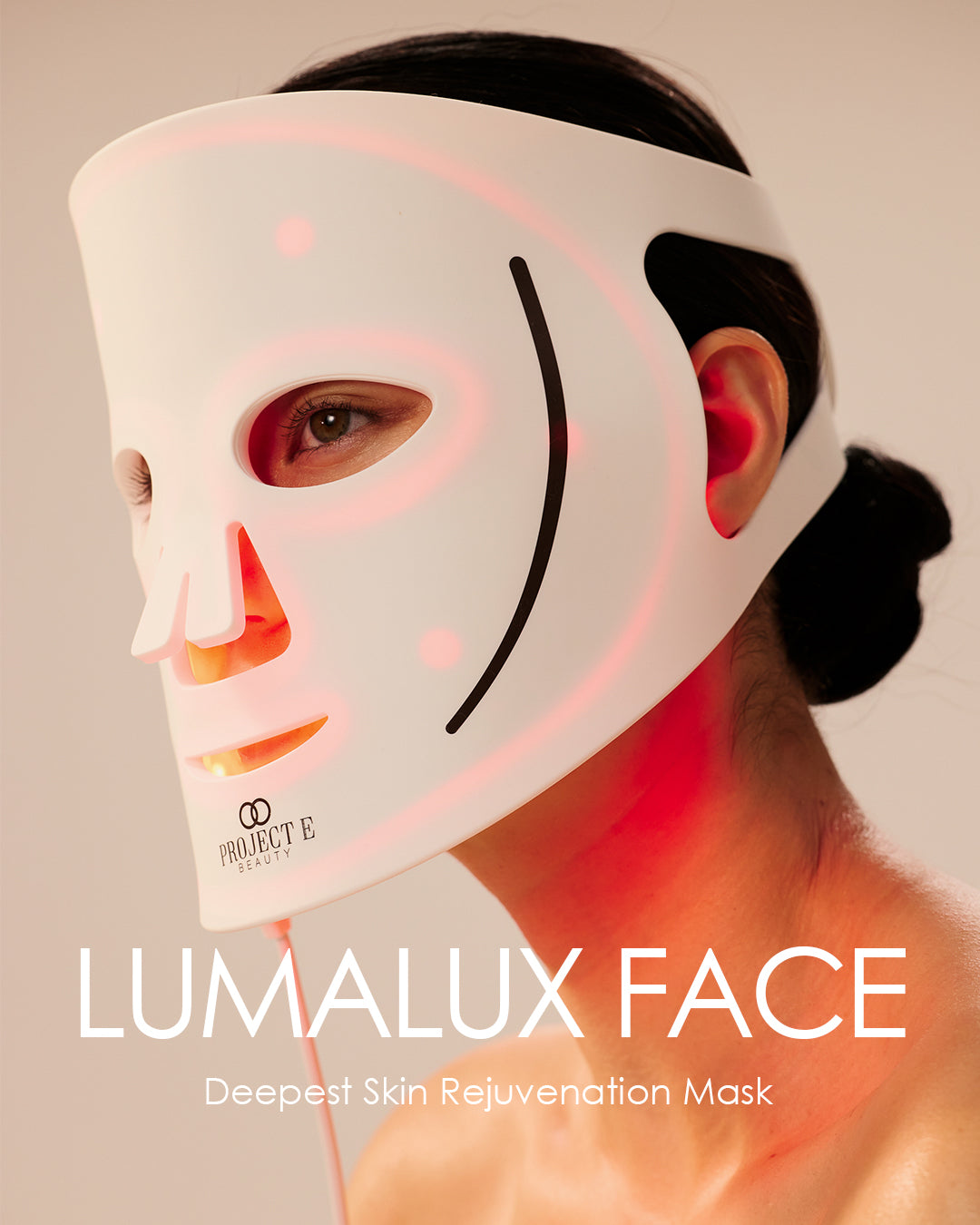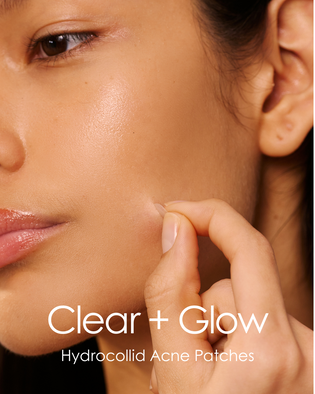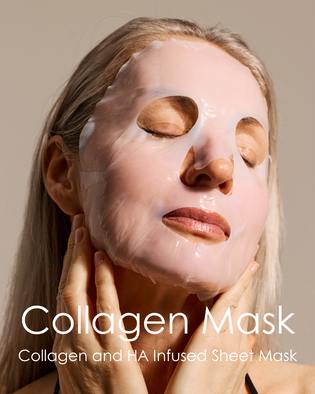
What is The Link Between Red Light Therapy and Longevity?
- 01 Red Light Therapy and Inflammation
- 02 Red Light Therapy and Cellular Function
- 03 Red Light Therapy and Brain Health
- 04 Red Light Therapy and Bone Health
- 05 Red Light Therapy and Immune Function
- 06 Red Light Therapy and Tissue Repair
- 07 Red Light Therapy and Oxidative Stress
- 08 Red Light Therapy and Sleep Quality
What Are The Benefits Of Red Light Therapy For Longevity?
Every time we open our phone apps, we are bombarded with something else that claims to inevitably make our lives shorter, from sitting to toxins and processed food. While it's easy to get caught up in fear-based messaging, our focus is on balance and empowerment. We're here to highlight the positive habits and proven choices that support longevity, rather than dwell on the doom-and-gloom narratives about early death that have become all too common
Even while espousing the benefits of modern medicine, many of us are keen to explore natural and safe ways to enhance our well-being and promote longevity without direct medical intervention. With this trend in mind, it is no surprise that red light therapy has been increasingly adopted as a way to do just that.
Below, we explore the many ways red light therapy can enhance overall well-being and promote longevity from home, in a safe, painless, and cost-effective way.
Red Light Therapy and Inflammation
Inflammation is the body's natural response to injury or infection. This is a natural and very beneficial bodily response to prevent the worsening of certain conditions. However, chronic inflammation occurs when the immune system is stimulated over a prolonged period, leading to potential tissue damage, scarring, reduced function of various bodily systems, accelerated aging, and the ultimate onset of chronic disease. In fact, inflammation is now considered a contributor to most chronic diseases, including heart disease, Alzheimer's, depression, and cancer.
Research shows that red light effectively reduces acute (short-term) and chronic (prolonged) inflammation in the body to enhance repair and regeneration and improve overall bodily functions. Red light boosts the function of the cells through enhanced light energy, allowing for a reduction in inflammatory markers. Red light has been explored in the treatment of autoimmune diseases such as lupus and M.S, which have been linked to inflammation in the body.

One randomized controlled trial demonstrated a rapid decrease in pro-inflammatory cytokines after red light therapy, within 30 minutes of exposure. TNF-alpha, IL-6, and IFN-gamma are cytokines that promote inflammation. TNF-alpha decreased 34 times, IL-6 decreased by 12 times, and IFN-gamma decreased by 1.5 times after light exposure.
Anti-inflammatory cytokines also increased by 2.7 - 3.5 times in those with normal baseline levels of inflammation. Another inflammatory factor, TGF-beta1, rose by 1.4 to 1.5 times in those with low levels.
Certain research even indicates that red light has an anti-inflammatory effect similar to that delivered by NSAIDs (anti-inflammatory drugs such as ibuprofen, naproxen).
Red light therapy has a powerful role to play in downregulating the body's inflammatory pathways to reduce inflammation, chronic disease, and the deceleration of many physiological processes.
Red Light Therapy and Cellular Function
Mitochondrial dysfunction is a reduction in the rate of energy production from our cells, leading to a reduction in energy output and a wider health impact. These impacts include muscle weakness, low energy and fatigue, and even cognitive and metabolic disorders. Mitochondrial dysfunction can impact one or many parts of the body, impacting cells, tissues, and organs.
Every cell in the body needs energy to function effectively. The mitochondria, or the energy currency of the cell, produce ATP in a process called oxidative phosphorylation. In healthy cells, this allows the body to carry out its many functions. However, when this process is inhibited, health concerns may become prevalent.
Red light therapy can enhance cellular metabolism by increasing the amount of light energy absorbed by the cells. At specific wavelengths (630nm and 660nm), red light particles enter the cell to reenergize the cell by stimulating the enzyme cytochrome c oxidase, which helps with ATP synthesis.
Improved cellular function is linked to increased longevity by enhancing the body's ability to repair damage, maintain vital processes, and resist disease.
Red Light Therapy and Brain Health
Red light therapy has been increasingly linked with the improvement of neurological conditions, including cognitive function and memory, depression, anxiety, and other mood disorders, as well as the treatment of Alzheimer's disease and overall brain health.
The treatment of anxiety and depression with red light is gaining momentum in the medical world, with some very promising research emerging. Research demonstrates a link between red light and inhibited blood flow in the prefrontal cortex, as red light boosts blood flow and oxygenation in the brain. This is one possible mechanism for improving depression with red light therapy. There are likely many mechanisms at play that are still being explored.
Red light is shown to reduce inflammation of the nervous system evident in Alzheimer's, parkinsons and even traumatic brain injury. One study demonstrates improved cognition, sleep, and recovery in patients with traumatic brain injury post red light treatments.
There is also some evidence of its ability to repair damaged cells, especially the mitochondria.
Better brain health supports a longer life by preserving cognitive abilities, lowering the risk of neurodegenerative diseases, and enhancing overall physical well-being. A healthy brain also promotes clearer decision-making, leading to safer choices and helping individuals maintain their independence and quality for longer.
Red Light Therapy and Bone Health
Human studies have indicated that red light at certain wavelengths can promote healing after breaks and fractures of the bone. When bones break, the production of ATP is halted, and the bone repair function is inhibited. Red light is shown to boost cellular energy to promote healing. Red and near-infrared light have been linked to increased bone formation and collagen deposition post-break. Laser therapy might also improve blood vessel responses (vascular responses), which could help explain the positive clinical effects seen. Beyond bones and fractures, red light for osteoporosis management helps to prevent further weakening of the bone and manage bone defects.
Healthy bones are essential for a long life because they enable mobility, safeguard vital organs, and lower the risk of severe fractures that can cause serious health issues and diminish quality of life. Strong bones support ongoing physical activity, which is closely associated with increased longevity and better overall health.
Red Light Therapy and Immune Function
Red light therapy is linked to improved immune function. It has been shown to boost T cells, a group of white blood cells that help to protect the body from infection. Another study showed that certain light wavelengths applied to bone marrow help to increase blood platelets, which play a significant role in immune response by contributing to the body's inflammatory responses.

Another study found a positive impact of the thymus glands, responsible for producing white blood cells and are therefore inherently linked to immune function. As we age, the thymus gland’s ability to function declines; however, red light therapy has been shown to counteract this age-related effect by helping to restore and support its activity, leading to 'improved function in aged people and even extend lifespan'.
Red Light Therapy and Tissue Repair
Red light therapy can repair wounds 20% quicker and with less scarring. There are several studies on the ability of red and infrared light to support tissue repair and promote the growth of new healthy tissue.
Red light supports a process called phagocytosis, where it removes damaged cell tissue to make way for new, healthy tissue. Red light also boosts blood flow and oxygenation to deliver nutrients to repair damaged cells, stimulate the production of new collagen, connective tissue, and capillaries.
Effective tissue repair and wound healing support longevity by lowering the risk of chronic illnesses and infections that often result from poor healing. When wounds heal properly, the body's protective barriers remain intact, preventing fluid loss and the entry of harmful pathogens. Additionally, efficient healing helps preserve tissue integrity and reduces the chance of chronic wounds or excessive scarring, which can lead to further health complications.
Red Light Therapy and Oxidative Stress
Oxidative stress occurs when there are 'too many unstable molecules called free radicals in the body and not enough antioxidants to get rid of them'. This imbalance can lead to a host of issues in the body as we age. Poor lifestyle, environmental factors, and sunlight all lead to oxidative stress in the body. Prolonged oxidative stress may contribute to the aging process and increase the risk of chronic inflammation, cancer, and various other diseases. Red light wavelengths reduce oxidative stress markers by upregulating our antioxidant defenses and repairing cells damaged by oxidative stress. This protects cells from the long-term impact of too many free radicals in the body and helps us to neutralize these threats. Lower levels of oxidative stress are generally associated with improved health and increased longevity, as reduced oxidative damage can slow aging and lower the risk of age-related diseases.

Red Light Therapy and Sleep Quality
Red light therapy has an impact on both the quality of our sleep and how quickly we can fall asleep, according to the current research. Red light before bed boosts the production of melatonin, or the 'sleepy' hormone, to help fall asleep faster and boost sleep quality.
Red light also helps with sleep inertia, often referred to as morning grogginess. Nightly red light sessions are linked to a more energized and clear start to the day. Red light also regulates circadian rhythm and promotes overall relaxation and mood.
Getting sufficient, high-quality sleep is closely associated with a longer lifespan. Research indicates that adults who consistently sleep 7 to 9 hours per night have a reduced risk of death and a lower likelihood of developing various health issues. Additionally, maintaining a regular sleep schedule and ensuring good sleep quality can further support long-term health and longevity.

written by Sophie Flair














4 comments
Hoi Carine, bedankt voor je vragen!
Hoewel de aanbevolen sessieduur 3 minuten per sessie is, is het voor de meeste gebruikers veilig om het langer te gebruiken (5-10 minuten). Als je de tijd wilt verlengen, raden we aan om te beginnen met 3 minuten rood licht, en vervolgens over te stappen op 3 minuten met een andere kleur zoals groen, enzovoort.
Ja, je kunt zeker meerdere behandelingen per dag uitvoeren met verschillende kleuren, zolang je huid het goed verdraagt.
Reageer gerust op de e-mail die we je hebben gestuurd voor verdere hulp!
Project E Beauty
Ledmasker,toestellen,die twee woorden zijn verkeerd getypt in mijn vorige mail.mvg
Carine Vannieuwenhuyse
heb vorige maand een lidmasker aangeschaft.Ik zit echter nog met veel vragen Zijn 3 min wel voldoende,mag je verschillende behandelingen per dag met een ander kleurtje uitvoeren. Welke combinatie van toestellen hebben het meeste effect? Heb wel mijn twijfels over de drie minuten is echt wel heel kort.MVG
Carine Vannieuwenhuyse
heb vorige maand een lidmasker aangeschaft.Ik zit echter nog met veel vragen Zijn 3 min wel voldoende,mag je verschillende behandelingen per dag met een ander kleurtje uitvoeren. Welke combinatie van toestellen hebben het meeste effect? Heb wel mijn twijfels over de drie minuten is echt wel heel kort.MVG
Carine Vannieuwenhuyse
Leave a comment
This site is protected by hCaptcha and the hCaptcha Privacy Policy and Terms of Service apply.